Analysis and Reflection on the Green, Low-Carbon, and Energy-Saving Design of the Super High-Rise Building
Abstract
:1. Introduction
2. Material and Methods
2.1. Shanghai Tower
2.1.1. Shape Analysis
- (1)
- Select WP1 on the plane, draw a 47,565 mm line from WP1 to determine the point WP2. Respectively, two rays are drawn from the two points WP1 and WP2, with an angle of 60 ° and 23.3°, and the intersection point is the point WP3;
- (2)
- Take point WP2 as the center and draw a 46.6° arc with a radius of 88,380 mm, and then take WP1 as the center and rotate the circular section 120° clockwise and counterclockwise to form three arcs;
- (3)
- Take the point WP3 as the center, and take R2 as the radius of the arc segment to determine the three small arcs and connect them to the large arc to form a triangular plane;
- (4)
- Take one-third of the radius from the midpoint of the arc, and make an angle of 95° symmetrically around the radius from the obtained point. Cut the small arc with the two sides of the angle to form a “V” mouth;
- (5)
- The complete reference plane profile is determined as shown in Figure 3.
- (1)
- Determine the dimensions of the four datum planes. According to the positioning principles and parameters given by the building, determine the ±0 m, 45 m, 605 m and 632 m elevation of the typical plane shape [20];
- (2)
- To determine the starting direction of the building rotation, rotate the “V” mouth of the ±0 m plane 50° clockwise from the south direction;
- (3)
- Determine the rotation angle. The total height of 632 m equals 632,000 copies, and each unit height of the building rotates at an angle of 120/605,000 = 0.000214286°, after which the overall rotation of the building itself is 135.429°. The rotation angle corresponds to elevation Z R = Z × 0.000214286°, as is shown in Figure 4.
2.1.2. Overview of Exterior Enclosure Structure
2.2. Methodology
2.2.1. Analytical Modeling
2.2.2. Material Components
2.2.3. Simulation Method and Mesh Size
- Wind Simulation
- Heat Transfer Simulation
3. Simulation Analysis
3.1. Analysis of Wind Environment
3.1.1. Program Comparison
3.1.2. Simulation Results
3.2. Analysis of Exterior Enclosure Structure
- (1)
- Geometric simplification of the curtain wall support system. The entire curtain wall support system is simplified to a circular ring structure with a radius of 50 m. This ring represents the centerline of the ring beam, which is the main structure supporting the curtain wall;
- (2)
- Distribution of structural supports. Structural supports, both vertical and radial, are considered to be evenly spread across the entirety of the ring structure. A horizontal radial steel pipe support is set every 8 to 10 m along the circumferential direction, and a total of 25 radial supports connect the curtain wall to the main floor structure [44,45];
- (3)
- Material properties. The entirety of the support structure is constructed from steel, featuring a modulus of elasticity measuring 206 GPa and a coefficient of thermal expansion of 12 × 10−6/°C [46];
- (4)
- Types of loads. Wind loads are considered uniformly distributed loads. Wind tunnel test results show that the maximum negative wind pressure reaches 6.5 kN/m². In addition, the weight of the glass curtain wall is also considered, with a plate weight of 1.2 kN/m² [47];
- (5)
- Connection method. All connections are assumed to be fixed, meaning that the interaction between support structures can transmit forces and moments.
3.3. Heat Transfer Simulation
4. Limitations of the Study and Future Research
5. Conclusions
Author Contributions
Funding
Institutional Review Board Statement
Informed Consent Statement
Data Availability Statement
Conflicts of Interest
References
- Sha, H.; Qi, D. A review of high-rise ventilation for energy efficiency and safety. Sustain. Cities Soc. 2020, 54, 101971. [Google Scholar] [CrossRef]
- Chen, H.; Yang, L. Spatio-Temporal Experience of Tour Routes in the Humble Administrator’s Garden Based on Isovist Analysis. Sustainability 2023, 15, 12570. [Google Scholar] [CrossRef]
- Mostafavi, F.; Tahsildoost, M.; Zomorodian, Z. Energy efficiency and carbon emission in high-rise buildings: A review (2005–2020). Build. Environ. 2021, 206, 108329. [Google Scholar] [CrossRef]
- Pan, W.; Pan, M. A dialectical system framework of zero carbon emission building policy for high-rise high-density cities: Perspectives from Hong Kong. J. Clean. Prod. 2018, 205, 1–13. [Google Scholar] [CrossRef]
- Gerasimidis, S.; Ellingwood, B. Twenty years of advances in disproportionate collapse research and best practices since 9/11/2001. J. Struct. Eng. 2023, 149, 02022002. [Google Scholar] [CrossRef]
- Meng, B.; Xiong, Y.; Zhong, W.; Duan, S.; Li, H. Progressive collapse behaviour of composite substructure with large rectangular beam-web openings. Eng. Struct. 2023, 295, 116861. [Google Scholar] [CrossRef]
- Madenci, E.; Fayed, S.; Mansour, W.; Özkılıç, Y.O. Buckling performance of pultruded glass fiber reinforced polymer profiles infilled with waste steel fiber reinforced concrete under axial compression. Steel Compos. Struct. Int. J. 2022, 45, 653–663. [Google Scholar]
- Fayed, S.; Badr el-din, A.; Basha, A.; Mansour, W. Shear behavior of RC pile cap beams strengthened using ultra-high performance concrete reinforced with steel mesh fabric. Case Stud. Constr. Mater. 2022, 17, e01532. [Google Scholar] [CrossRef]
- Mirrahimi, S.; Mohamed, M.F.; Haw, L.C.; Ibrahim NL, N.; Yusoff WF, M.; Aflaki, A. The effect of building envelope on the thermal comfort and energy saving for high-rise buildings in hot–humid climate. Renew. Sustain. Energy Rev. 2016, 53, 1508–1519. [Google Scholar] [CrossRef]
- Saroglou, S.; Meir, I.A.; Theodosiou, T. Energy Efficiency of a High-Rise Office Building in the Mediterranean Climate with the Use of Different Envelope Scenarios. In Smart and Sustainable Cities and Buildings; Springer: Berlin/Heidelberg, Germany, 2020; pp. 651–661. [Google Scholar]
- Zhang, H.; Zhou, X.F. Application of green building technology in Shanghai Tower. Sichuan Archit. Sci. Res. 2014, 40, 277–278. [Google Scholar]
- Gu, J.P. Shanghai Tower, ultra-high green building. Constr. Technol. Dev. 2015, 42, 19–21. [Google Scholar]
- Qi, X.Y.; Zhao, X.; Zhang, P.P.; Ding, J.M.; Nao, S. Study on vertical deformation effect of Shanghai Tower structure. J. Build. Struct. 2011, 32, 15–21. [Google Scholar]
- Wu, Z.K.; Zhao, L.; Zhu, L.D. Observational analysis of the environmental wind characteristics of the Shanghai, World Financial Center Project site. Struct. Eng. 2009, 25, 98–103. [Google Scholar]
- Tang, Y.; Zhao, X. 121-story Shanghai Center Tower foundation re-analysis using a compensated pile foundation theory. Struct. Des. Tall Spec. Build. 2014, 23, 854–879. [Google Scholar] [CrossRef]
- Wang, W.D.; Li, Y.H.; Wu, J.B. Field loading tests on large diameter and super-long bored piles of Shanghai Center Tower. Chin. J. Geotech. Eng. 2011, 33, 1817–1826. [Google Scholar]
- Gong, J.; Zhou, H. Key Technology of Structural Construction of Shanghai Tower. Construction 2014, 36, 91–101. [Google Scholar]
- Wu, J.; Xu, H.; Zhang, Q. Dynamic performance evaluation of Shanghai Tower under winds based on full-scale data. Struct. Des. Tall Spec. Build. 2019, 28, e1611. [Google Scholar] [CrossRef]
- Zhang, Y.; Altan, H. A comparison of the occupant comfort in a conventional high-rise office block and a contemporary environmentally-concerned building. Build. Environ. 2011, 46, 535–545. [Google Scholar] [CrossRef]
- Tang, Q. New Civil Building Energy Efficiency Assessment Method Research. Ph.D. Thesis, Wuhan University of Science and Technology, Wuhan, China, 2013. [Google Scholar]
- Ding, D.M.; Nao, S.; Zhao, X.; Wu, H.L. Some key problems in the structural analysis of Shanghai Tower. J. Build. Struct. 2010, 31, 122–131. [Google Scholar]
- Zhao, X.; Ding, J.M.; Sun, H.H.; Nao, S. Structural wind resistance design of Shanghai Tower. J. Build. Struct. 2011, 32, 1–7. [Google Scholar]
- Tominaga, Y. Flow around a high-rise building using steady and unsteady RANS CFD: Effect of large-scale fluctuations on the velocity statistics. J. Wind. Eng. Ind. Aerodyn. 2015, 142, 93–103. [Google Scholar] [CrossRef]
- Feng, C.; Gu, M. Numerical simulation of wind veering effects on square-section super high-rise buildings under various wind directions. J. Build. Eng. 2021, 44, 102954. [Google Scholar] [CrossRef]
- Das, A.; Maity, D.; Bhattacharyya, S.K. Investigation on the efficiency of deep liquid tanks in controlling dynamic response of high-rise buildings: A computational framework. Structures 2022, 37, 1129–1141. [Google Scholar] [CrossRef]
- Li, S.; Chen, S. Field monitoring and prediction on temperature distribution of glass curtain walls of a super high-rise building. Eng. Struct. 2022, 250, 113405. [Google Scholar] [CrossRef]
- Xie, J. Research on characteristics and quality defects of aluminum molds in high-rise buildings. In Structural Seismic and Civil Engineering Research; CRC Press: Boca Raton, FL, USA, 2023; pp. 417–423. [Google Scholar]
- Gong, J.; Fang, T.; Zuo, J. A review of key technologies development of super high-rise building construction in China. Adv. Civ. Eng. 2022, 2022, 5438917. [Google Scholar] [CrossRef]
- Ahmadi, J.; Mahdavinejad, M.; Larsen, O.K.; Zhang, C.; Zarkesh, A.; Asadi, S. Evaluating the different boundary conditions to simulate airflow and heat transfer in Double-Skin Facade. In Building Simulation; Tsinghua University Press: Beijing, China, 2022; pp. 1–17. [Google Scholar]
- Jiru, T.E.; Tao, Y.X.; Haghighat, F. Airflow and heat transfer in double skin facades. Energy Build. 2011, 43, 2760–2766. [Google Scholar] [CrossRef]
- Yang, L.; Li, Y. Low-carbon city in China. Sustain. Cities Soc. 2013, 9, 62–66. [Google Scholar] [CrossRef]
- Vakili-Ardebili, A.; Boussabaine, A.H. Ecological building design determinants. Archit. Eng. Des. Manag. 2010, 6, 111–131. [Google Scholar] [CrossRef]
- Dong, J.G.; Yan, Z.F.; Cao, J.J. The level and change of indoor and outdoor particulate concentration in Xi’an high-rise apartment. Sci. Technol. Rev. 2012, 6, 42–45. [Google Scholar]
- Yang, L.; Liu, X.; Qian, F. Research on water thermal effect on surrounding environment in summer. Energy Build. 2020, 207, 109613. [Google Scholar] [CrossRef]
- Iqbal, Q.M.Z.; Chan, A.L.S. Pedestrian level wind environment assessment around group of high-rise cross-shaped buildings: Effect of building shape, separation and orientation. Build. Environ. 2016, 101, 45–63. [Google Scholar] [CrossRef] [PubMed]
- Wang, H.; Li, X.J.; Han, H. Numerical analysis of the influence of plane layout on wind environment of high-rise buildings. Architecture 2011, s1, 1423–1426. [Google Scholar]
- Li, Y.; Chen, L. Study on the influence of voids on high-rise building on the wind environment. Build. Simul. 2020, 13, 419–438. [Google Scholar] [CrossRef]
- Li, W.; Xie, L.; He, X.; Li, J.; Tu, K.; Wei, L.; Wu, J.; Guo, Y.; Ma, X.; Zhang, P.; et al. Diagnostic and prognostic implications of microRNAs in human hepatocellular carcinoma. Int. J. Cancer 2008, 123, 1616–1622. [Google Scholar] [CrossRef] [PubMed]
- Chau, C.K.; Tse, M.S.; Chung, K.Y. A choice experiment to estimate the effect of green experience on preferences and willingness-to-pay for green building attributes. Build. Environ. 2010, 45, 2553–2561. [Google Scholar] [CrossRef]
- Sun, D.; Xu, J.; Zhao, J.; Zhang, D.; Chen, K. Study on a new model for urban residential quarter of 21st century. J. Univ. Shanghai Sci. Technol. 2000, 22, 347–351. [Google Scholar]
- Kelly, D.; Poon, D.; Irwin, P.; Xie, J. Wind engineering of the Shanghai center tower. In Advances in Hurricane Engineering: Learning from Our Past; ASCE: Reston, VA, USA, 2013; pp. 426–436. [Google Scholar]
- Qian, F. The potential of a retractable roof of the natatorium on the indoor environmental improvement: Taking Jiading natatorium of Tongji University as an example. Indoor Built Environ. 2023, 32, 1505–1515. [Google Scholar] [CrossRef]
- Zeng, R.; Wang, X.; Di, H.; Jiang, F.; Zhang, Y. New concepts and approach for developing energy efficient buildings: Ideal specific heat for building internal thermal mass. Energy Build. 2011, 43, 1081–1090. [Google Scholar] [CrossRef]
- Zhang, F.L.; Xiong, H.B.; Shi, W.X.; Ou, X. Structural health monitoring of Shanghai Tower during different stages using a Bayesian approach. Struct. Control Health Monit. 2016, 23, 1366–1384. [Google Scholar] [CrossRef]
- Li, Y.; Chen, L. A study on the database of modular façade retrofitting building envelope. Energy Build. 2020, 214, 109826. [Google Scholar] [CrossRef]
- Su, J.Z.; Xia, Y.; Chen, L.; Zhao, X.; Zhang, Q.L.; Xu, Y.L.; Ding, J.M.; Xiong, H.B.; Ma, R.J.; Lv, X.L.; et al. Long-term structural performance monitoring system for the Shanghai Tower. J. Civ. Struct. Health Monit. 2013, 3, 49–61. [Google Scholar] [CrossRef]
- Pan, Y.; Ventura, C.E.; Xiong, H.; Zhang, F.L. Model updating and seismic response of a super tall building in Shanghai. Comput. Struct. 2020, 239, 106285. [Google Scholar] [CrossRef]
- Albadrani, A.M.; Almutairi, D.A. Studying the Compressed Mechanical Characteristics of a Novel Carbon-Free Plaster Using ANSYS Software. Buildings 2023, 13, 2871. [Google Scholar] [CrossRef]
- Yaylacı, M.; Öner, E.; Birinci, A. Comparison between analytical and ANSYS calculations for a receding contact problem. J. Eng. Mech. 2014, 140, 04014070. [Google Scholar] [CrossRef]
- Şentürk, A.; Işık, H.; Evci, C. Thermo-mechanically coupled thermal and stress analysis of interior ballistics problem. Int. J. Therm. Sci. 2016, 104, 39–53. [Google Scholar] [CrossRef]
- Punarselvam, E.; Sikkandar, M.Y.; Bakouri, M.; Prakash, N.B.; Jayasankar, T.; Sudhakar, S. Different loading condition and angle measurement of human lumbar spine MRI image using ANSYS. J. Ambient. Intell. Humaniz. Comput. 2021, 12, 4991–5004. [Google Scholar] [CrossRef]
- Wu, Y.; Sheng, Y.; Wang, Y.; Jin, H.; Chen, W. Stresses and deformations in a buried oil pipeline subject to differential frost heave in permafrost regions. Cold Reg. Sci. Technol. 2010, 64, 56–261. [Google Scholar] [CrossRef]
- Taskaya, S.; Taskaya, S. Mapping of Stress Distributions of Hangar Roof Systems in Ansys Software. Int. J. Adv. Eng. Res. Dev. 2019, 6, 82–89. [Google Scholar]
- Shokrieh, M.M.; Rezaei, D. Analysis and optimization of a composite leaf spring. Compos. Struct. 2003, 60, 317–325. [Google Scholar] [CrossRef]
- Gavryushin, S.S.; Skvortsov, P.A. Evaluation of output signal nonlinearity for semiconductor strain gage with ANSYS software. Solid State Phenom. 2017, 269, 60–70. [Google Scholar] [CrossRef]
- Toparli, M.; Sen, F.; Culha, O.; Celik, E. Thermal stress analysis of HVOF sprayed WC–Co/NiAl multilayer coatings on stainless steel substrate using finite element methods. J. Mater. Process. Technol. 2007, 190, 26–32. [Google Scholar] [CrossRef]
- Wu, J.; Hu, N.; Dong, Y.; Zhang, Q.; Yang, B. Wind characteristics atop Shanghai Tower during typhoon Jongdari using field monitoring data. J. Build. Eng. 2021, 33, 101815. [Google Scholar] [CrossRef]
- Zhang, T.; Cao, D. Simulation study on the influence of fire partition on curtain wall temperature in super high-rise buildings in China. Complexity 2021, 2021, 4124049. [Google Scholar] [CrossRef]
- Yin, R.; Xu, P.; Shen, P. Case study: Energy savings from solar window film in two commercial buildings in Shanghai. Energy Build. 2012, 45, 132–140. [Google Scholar] [CrossRef]
- El Nakla, M. Forced convection heat transfer in two-dimensional ribbed channels with varying heat flux profiles using ANSYS’ software and modeling. Arab. J. Sci. Eng. 2014, 39, 2157–2164. [Google Scholar] [CrossRef]
- Liang, J.Z.; Li, F.H. Simulation of heat transfer in hollow-glass-bead-filled polypropylene composites by finite element method. Polym. Test. 2007, 26, 419–424. [Google Scholar] [CrossRef]
- Steiner, T.R. High temperature steady-state experiment for computational radiative heat transfer validation using COMSOL and ANSYS. Results Eng. 2022, 13, 100354. [Google Scholar] [CrossRef]
- Zhu, Q.; Wu, W.; Yang, Y.; Han, Z.; Bao, Y. Finite element analysis of heat transfer performance of vacuum glazing with low-emittance coatings by using ANSYS. Energy Build. 2020, 206, 109584. [Google Scholar] [CrossRef]



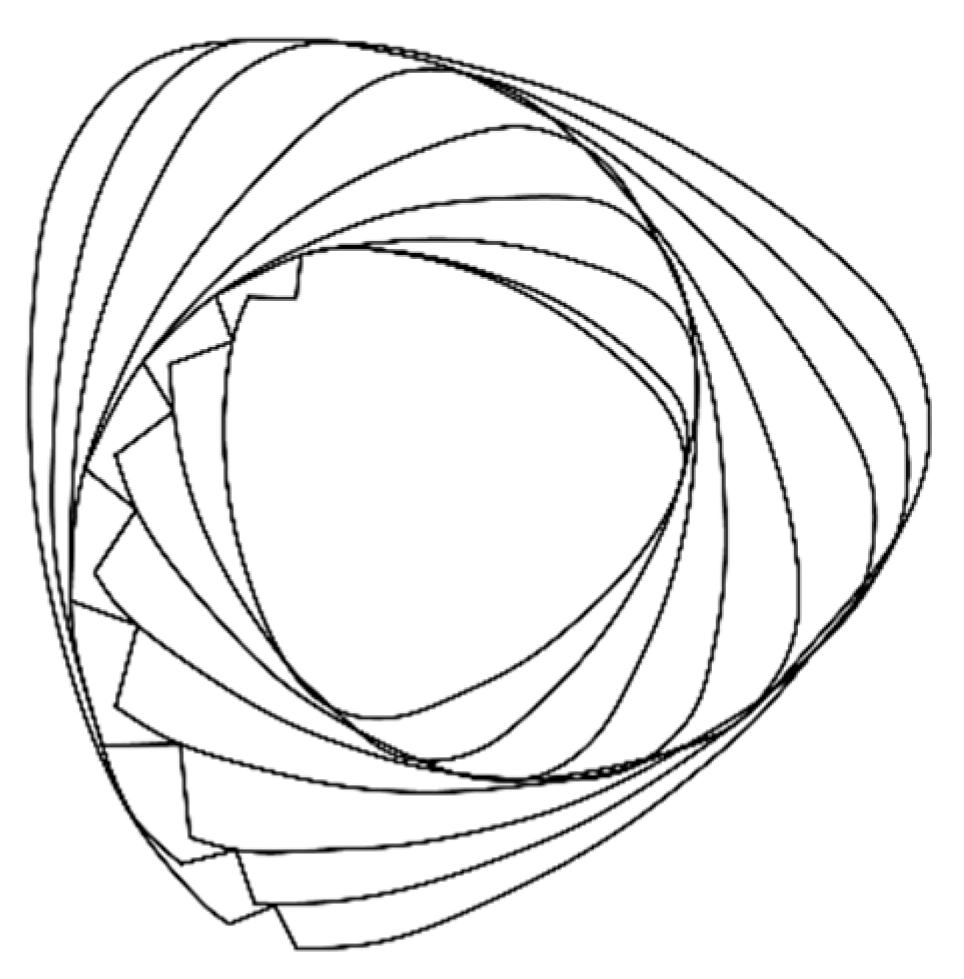
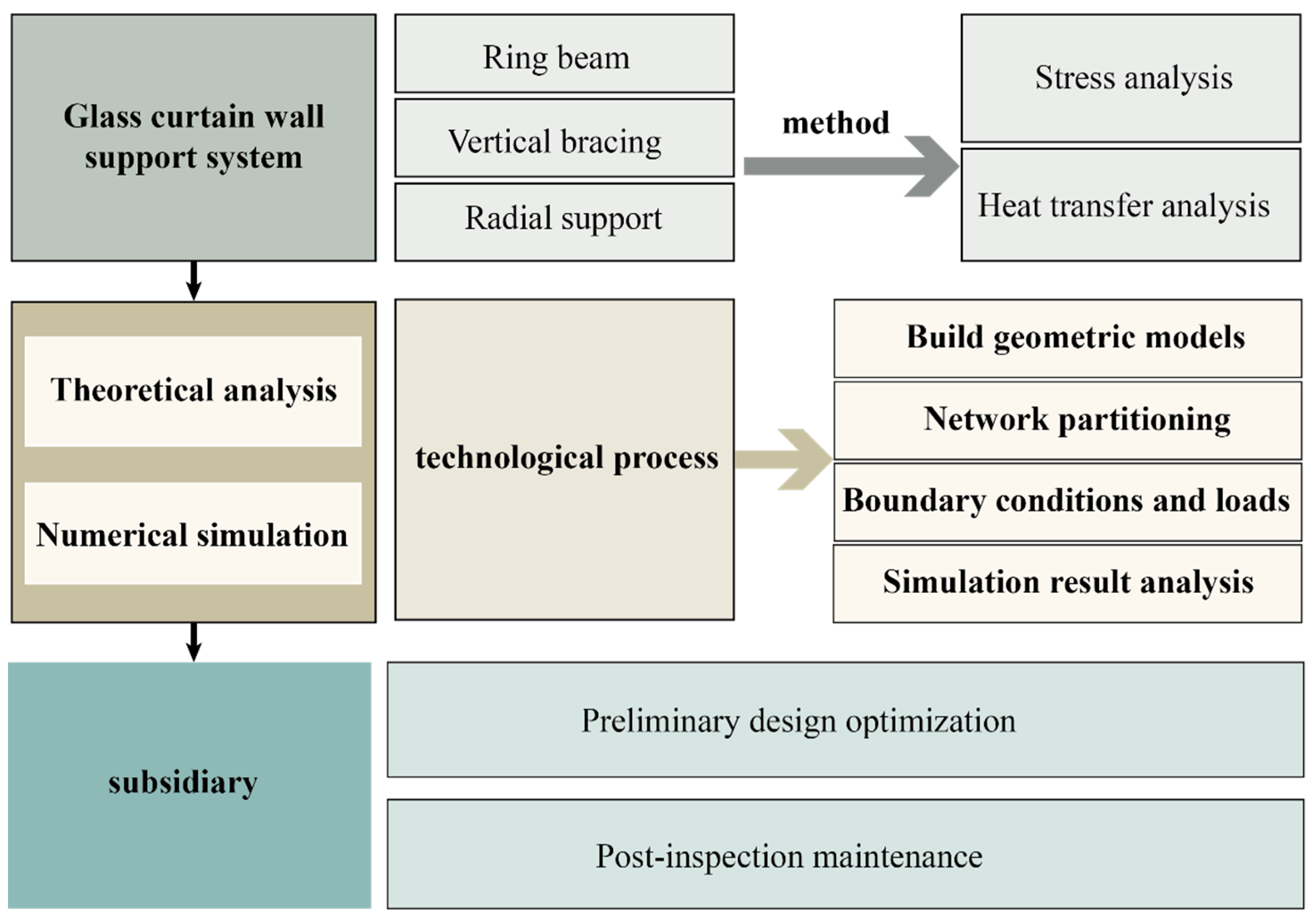













| Height | 0 | 45 | 100 | 200 | 300 | 400 | 500 | 600 | 605 | 632 |
| Rotation angle | 0 | 8.92562 | 19.8347 | 39.6694 | 59.5041 | 79.3388 | 99.1735 | 119.008 | 120 | 125.355 |
| Horizontal Cross-Section | Side Cross-Section | ||
|---|---|---|---|
 |  |  |  |
| 100 m | 200 m | 300 m | |
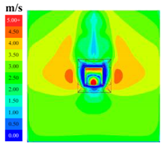 | 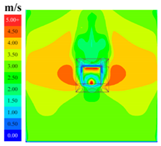 |  | |
| 400 m | 500 m | 600 m | |
| Horizontal Cross-Section | Side Cross-Section | ||
|---|---|---|---|
 |  |  |  |
| 100 m | 200 m | 300 m | |
 |  |  | |
| 400 m | 500 m | 600 m | |
| Horizontal Cross-Section | Side Cross-Section | ||
|---|---|---|---|
 |  |  | 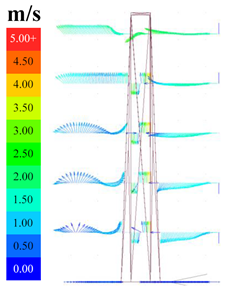 |
| 100 m | 200 m | 300 m | |
 |  |  | |
| 400 m | 500 m | 600 m | |
| Horizontal Cross-Section | Side Cross-Section | ||
|---|---|---|---|
 |  |  |  |
| 100 m | 200 m | 300 m | |
 | 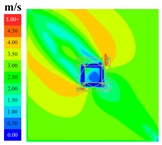 | 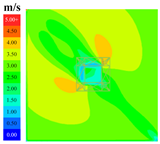 | |
| 400 m | 500 m | 600 m | |
| Horizontal Cross-Section | Side Cross-Section | ||
|---|---|---|---|
 |  |  |  |
| 100 m | 200 m | 300 m | |
 |  |  | |
| 400 m | 500 m | 600 m | |
| Horizontal Cross-Section | Side Cross-Section | ||
|---|---|---|---|
 | 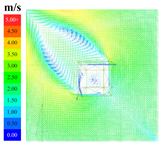 |  | 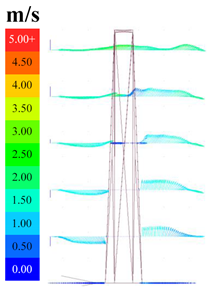 |
| 100 m | 200 m | 300 m | |
 | 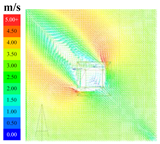 |  | |
| 400 m | 500 m | 600 m | |
| Horizontal Cross-Section | Side Cross-Section | ||
|---|---|---|---|
 |  | 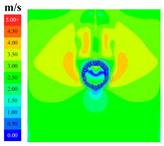 |  |
| 100 m | 200 m | 300 m | |
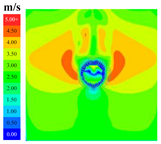 |  |  | |
| 400 m | 500 m | 600 m | |
| Horizontal Cross-Section | Side Cross-Section | ||
|---|---|---|---|
 |  |  | 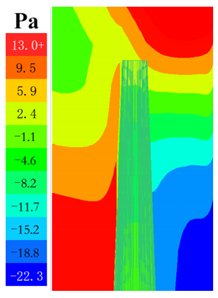 |
| 100 m | 200 m | 300 m | |
 |  |  | |
| 400 m | 500 m | 600 m | |
| Horizontal Cross-Section | Side Cross-Section | ||
|---|---|---|---|
 |  |  | 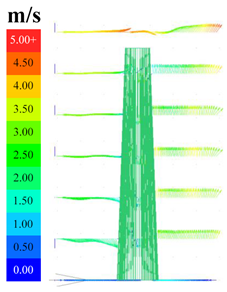 |
| 100 m | 200 m | 300 m | |
 |  |  | |
| 400 m | 500 m | 600 m | |
| Horizontal Cross-Section | Side Cross-Section | ||
|---|---|---|---|
 |  |  |  |
| 100 m | 200 m | 300 m | |
 |  |  | |
| 400 m | 500 m | 600 m | |
| Horizontal Cross-Section | Side Cross-Section | ||
|---|---|---|---|
 |  | 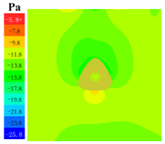 |  |
| 100 m | 200 m | 300 m | |
 |  |  | |
| 400 m | 500 m | 600 m | |
| Horizontal Cross-Section | Side Cross-Section | ||
|---|---|---|---|
 |  |  |  |
| 100 m | 200 m | 300 m | |
 |  |  | |
| 400 m | 500 m | 600 m | |
| Horizontal Cross-Section | Side Cross-Section | ||
|---|---|---|---|
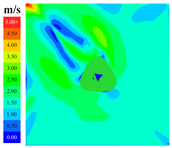 |  |  |  |
| 100 m | 200 m | 300 m | |
 |  |  | |
| 400 m | 500 m | 600 m | |
| Horizontal Cross-Section | Side Cross-Section | ||
|---|---|---|---|
 |  | 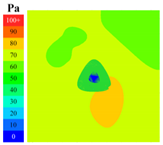 |  |
| 100 m | 200 m | 300 m | |
 |  |  | |
| 400 m | 500 m | 600 m | |
| Horizontal Cross-Section | Side Cross-Section | ||
|---|---|---|---|
 |  |  | 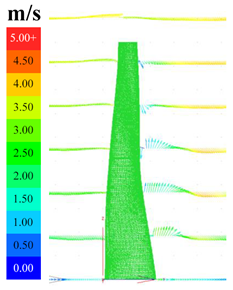 |
| 100 m | 200 m | 300 m | |
 |  |  | |
| 400 m | 500 m | 600 m | |
| Vertical support simulation cloud diagram | Condition 1 | Condition 2 | Condition 3 |
 |  |  | |
| Static wind condition | Wind pressure 60 KN/m2 | Wind pressure 120 KN/m2 | |
| Radial support simulation cloud diagram | Condition 1 | Condition 2 | Condition 3 |
 |  |  | |
| Static wind condition | Wind pressure 60 KN/m2 | Wind pressure 120 KN/m2 |
| Operational Condition | Static Wind State | Wind Pressure 6 kN/m2 | Wind Pressure 12 kN/m2 | |
|---|---|---|---|---|
| Deformation | Maximum Deformation (cm) | 2.18 | 2.2 | 2.35 |
| Location of Maximum Deformation | Mid-span of Ring Beam | Mid-span of Ring Beam on Windward Side | Mid-span of Ring Beam on Windward Side | |
| Strain | Maximum Equivalent Strain (μ) | 405.5 | 417.2 | 432.85 |
| Location of Maximum Equivalent Strain | Radial Support at Fixed End | Radial Support at Fixed End | Radial Support at Fixed End | |
| Stress | Maximum Equivalent Stress (MPa) | 69.86 | 72.22 | 75.09 |
| Location of Maximum Equivalent Stress | Radial Support at Fixed End | Radial Support at Fixed End | Radial Support at Fixed End | |
| Support axial force | Radial Support Axial Force (kN) | 5630 (Pressure) | 5600 (Pressure) | 5600 (Pressure) |
| Vertical Support Axial Force (kN) | −2002.7 (Pressure) | −1767.1 (Pressure) | −2316.9 (Pressure) | |
| Bending moment | Fixed End Bending Moment (kNm) | 1455.4 | 1504.6 | 1564.4 |
| Distance from Fixed End (m) | Static Wind Axial Force (103 kN) | Axial Force Due to 60 kN Wind Pressure (103 kN) | Axial Force Due to 120 kN Wind Pressure (103 kN) | Static Wind Bending Moment (103 kN/m) | Bending Moment Due to 60 kN Wind Pressure (103 kN) | Bending Moment Due to 120 kN Wind Pressure (103 kN) |
|---|---|---|---|---|---|---|
| 1 | −5.63 | −0.056 | −0.056 | 257.9 | 255.7 | 254.7 |
| 2 | −5.2 | −0.0518 | −0.0518 | 240.5 | 238.4 | 237.4 |
| 3 | −4.69 | −0.0467 | −0.0467 | 218.9 | 216.9 | 216.1 |
| 4 | −3.76 | −0.0374 | −0.0374 | 178.8 | 177.1 | 176.3 |
| 5 | −3.36 | −0.0334 | −0.0334 | 161.2 | 159.6 | 158.9 |
| 6 | −3.08 | −0.0306 | −0.0306 | 148.4 | 147 | 146.3 |
| 7 | −2.58 | −0.0257 | −0.0257 | 125.7 | 124.5 | 123.9 |
| 8 | −2.09 | −0.0208 | −0.0208 | 102.6 | 101.5 | 101.1 |
| 9 | −1.11 | −0.011 | −0.011 | 55.1 | 54.5 | 54.2 |
| 10 | −0.26 | −0.0026 | −0.0026 | 13.2 | 13.1 | 13.1 |
| Parameter Type | Description | Numeric Values | Unit |
|---|---|---|---|
| Thermal Conductivity (K Value) | The ability to measure the material’s conduction of heat energy | 1.0 | W/(m·K) |
| Density | The ratio of mass to volume of the material | 2500 | kg/m³ |
| Specific Heat Capacity | The amount of heat absorbed or released by the material per unit mass to change its temperature by 1 °C | 750 | J/(kg·K) |
| Coefficient of Thermal Expansion | The degree of volume or length change of the material under temperature variation | 9 × 10−6 | 1/K |
| Light Transmittance | The degree to which the material allows light to pass through | Low-E variable, depending on the Low-E coating | % |
| U Value | The overall heat transfer coefficient of the entire window assembly, including the frame and glass | 1.8 | W/(m²·K) |
| Temperature distribution map (°C) | Winter | Summer |
 | 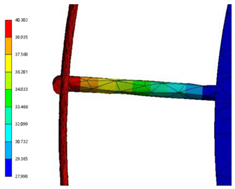 | |
| Outdoor 5 °C | Outdoor 40.3 °C | |
| Heat flux conduction diagram | Winter | Summer |
 |  | |
| Outdoor 5 °C | Outdoor 40.3 °C |
Disclaimer/Publisher’s Note: The statements, opinions and data contained in all publications are solely those of the individual author(s) and contributor(s) and not of MDPI and/or the editor(s). MDPI and/or the editor(s) disclaim responsibility for any injury to people or property resulting from any ideas, methods, instructions or products referred to in the content. |
© 2024 by the authors. Licensee MDPI, Basel, Switzerland. This article is an open access article distributed under the terms and conditions of the Creative Commons Attribution (CC BY) license (https://creativecommons.org/licenses/by/4.0/).
Share and Cite
Li, Y.; Chen, H.; Yu, P.; Yang, L. Analysis and Reflection on the Green, Low-Carbon, and Energy-Saving Design of the Super High-Rise Building. Sustainability 2024, 16, 4146. https://doi.org/10.3390/su16104146
Li Y, Chen H, Yu P, Yang L. Analysis and Reflection on the Green, Low-Carbon, and Energy-Saving Design of the Super High-Rise Building. Sustainability. 2024; 16(10):4146. https://doi.org/10.3390/su16104146
Chicago/Turabian StyleLi, Yangluxi, Huishu Chen, Peijun Yu, and Li Yang. 2024. "Analysis and Reflection on the Green, Low-Carbon, and Energy-Saving Design of the Super High-Rise Building" Sustainability 16, no. 10: 4146. https://doi.org/10.3390/su16104146






